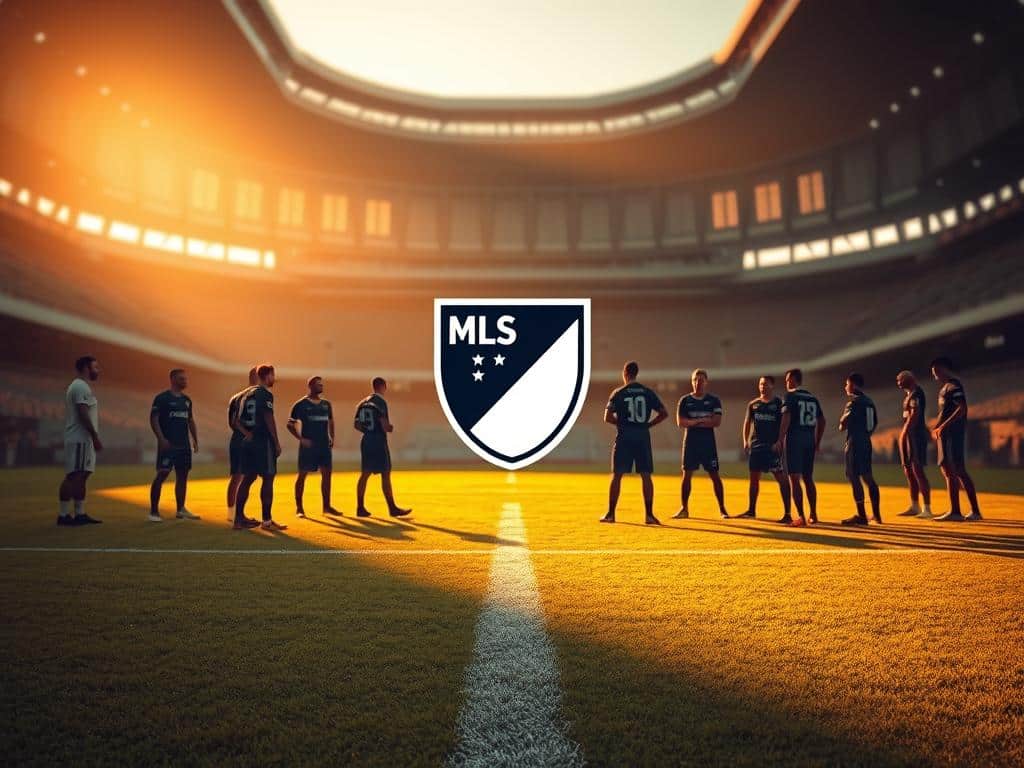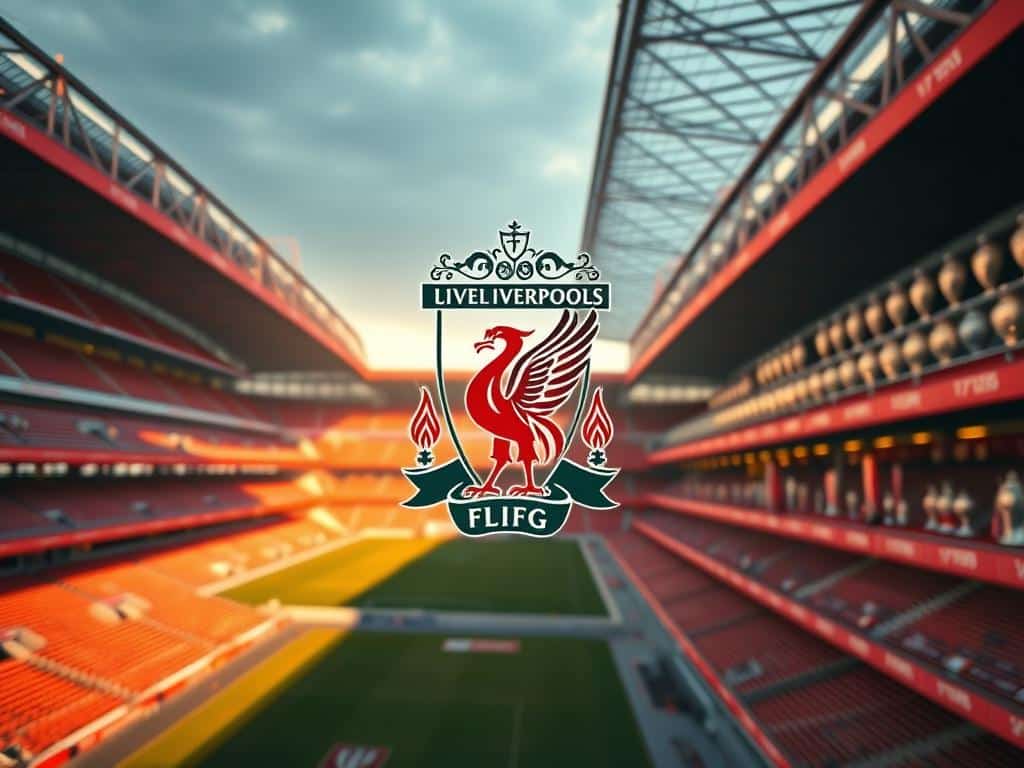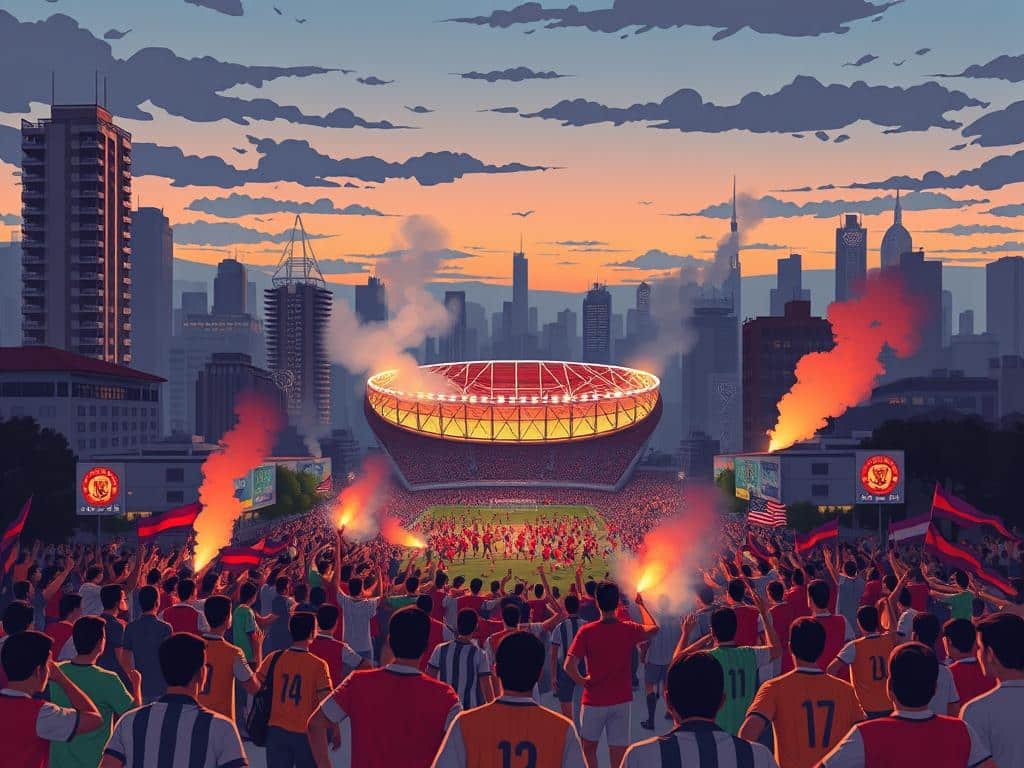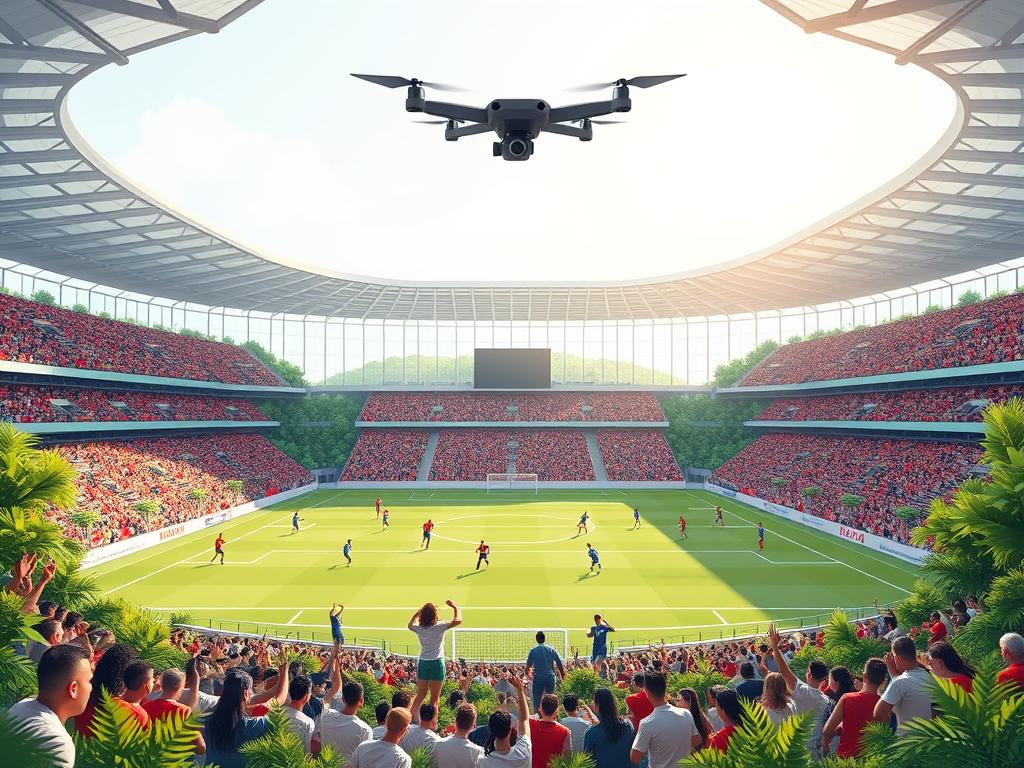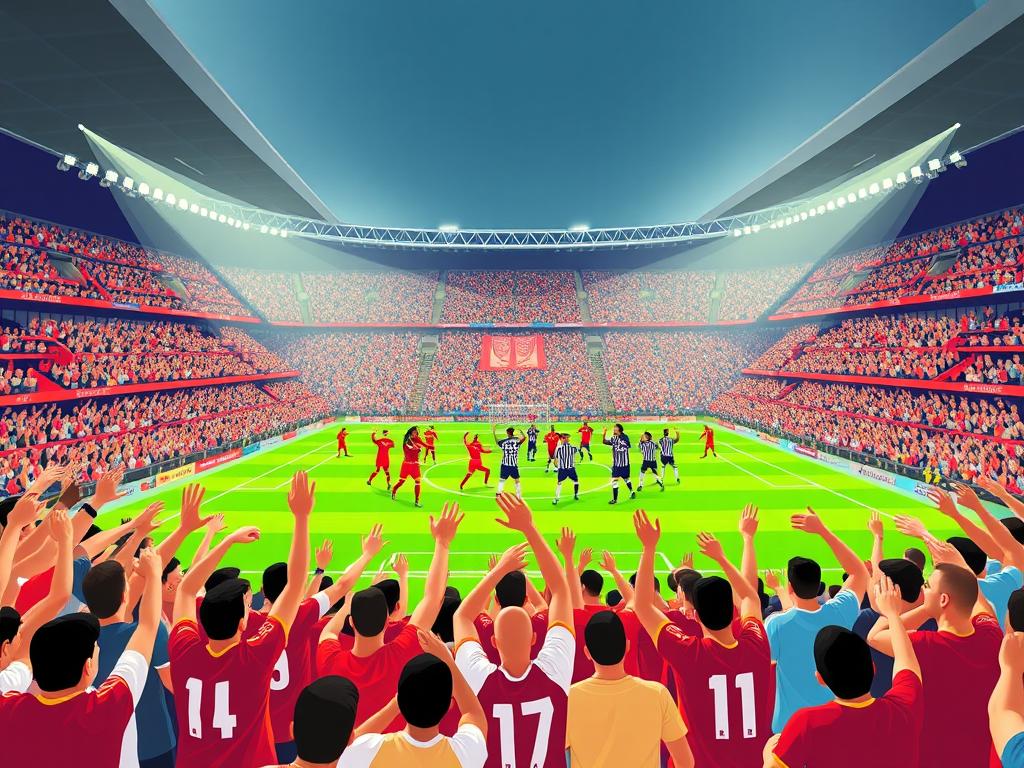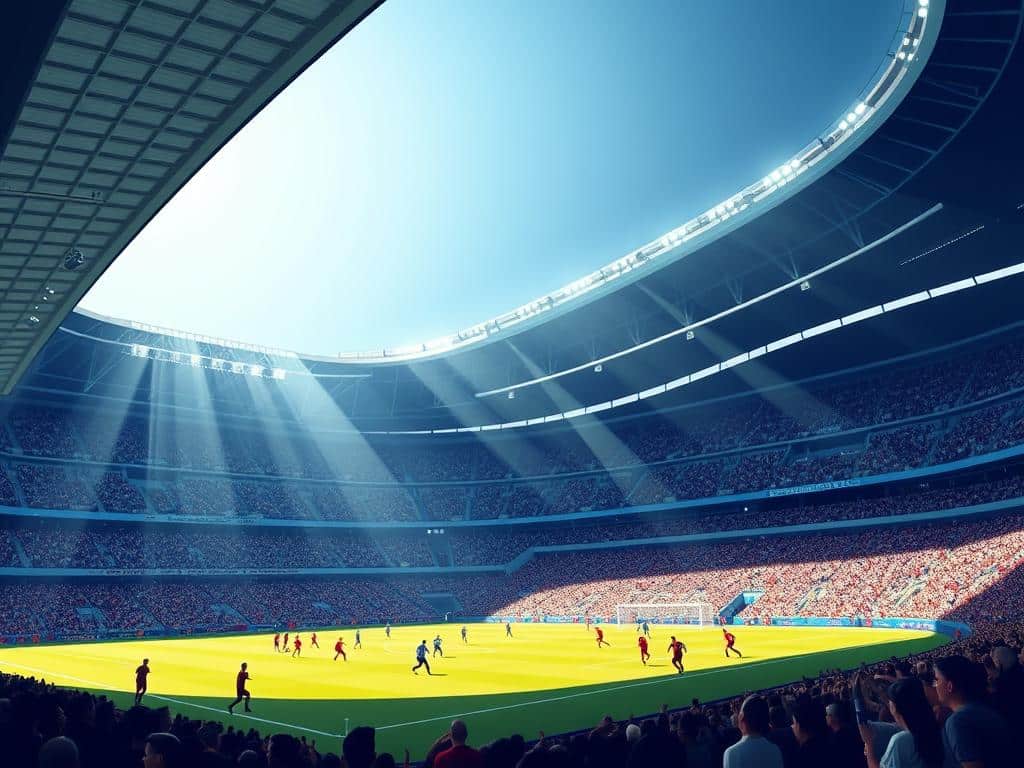Few clubs in football history have captured the world’s imagination like Manchester United. With 20 Premier League titles and three European Cups, this iconic team has built a legacy of dominance. From the tragic yet inspiring Busby Babes to Sir Alex Ferguson’s legendary reign, their journey is packed with unforgettable moments.
What makes this club stand out? It’s more than just trophies. The team’s resilience, visionary leadership, and passionate fanbase have fueled its rise. Whether it’s the 1968 European Cup win or the 1999 Treble, each era tells a story of grit and glory.
Ready to dive into how they became football royalty? Let’s explore the key moments and figures that shaped this incredible success.
The Birth of a Football Giant: Manchester United’s Early Years
Long before global fame, this club started as Newton Heath LYR, a team of railway employees. Founded in 1878, they played in muddy fields and wore green-and-gold jerseys—a far cry from today’s iconic red.
Founding and Early Struggles
By 1902, Newton Heath was drowning in debt. The club couldn’t even afford to wash uniforms! Enter J.H. Davies, a brewery magnate who paid off the £2,000 debt and renamed the team Manchester United. His cash injection saved them from collapse.
The Impact of J.H. Davies
Davies didn’t stop at finances. He funded Old Trafford, a state-of-the-art ground that opened in 1910. Nicknamed “Moneybags United,” the team won their first league titles (1908, 1911) and the 1909 FA Cup under his watch.
- 1878: Born as Newton Heath, a railway workers’ team.
- 1902: Davies rescues the club, renames it Manchester United.
- 1910: Old Trafford debuts, setting a new standard for stadiums.
But success came with drama. The FA censured the club in 1910 for financial mismanagement—proof that even legends had rocky starts.
The Matt Busby Era: Laying the Foundation for Greatness
When football needed a visionary, Matt Busby answered the call. Appointed in 1945, he transformed Manchester United by demanding full control over the team—a radical move at the time. His player-first approach became the blueprint for modern management.
Post-War Rebuilding and the Busby Babes
Busby’s genius shone brightest with his youth policy. He scouted talents like Duncan Edwards and Eddie Colman, molding them into the “Busby Babes.” These young stars played with fearless flair, winning back-to-back league titles in the 1950s.
Fans adored their attacking style. But tragedy struck in 1958. Returning from a European Cup match in Belgrade, their plane crashed in Munich, killing eight players. The world mourned, and football stood still.
The Munich Air Disaster and Its Aftermath
The disaster tested the club’s spirit. Busby, severely injured, rebuilt the team from scratch. By 1960, attendance at Old Trafford doubled to 47,000—proof of the fans’ unwavering support.
- 1958: Global sympathy turned United into a symbol of resilience.
- 1960s: Busby’s rebuilt squad included legends like Bobby Charlton.
- Legacy: The tragedy united fans worldwide, cementing the club’s global appeal.
Busby’s perseverance paid off. In 1968, he lifted the European Cup, completing a journey from despair to triumph.
The European Triumph: 1968 and Beyond
Three names—Bobby Charlton, George Best, and Denis Law—became synonymous with European glory. Dubbed the “Holy Trinity,” their complementary styles dazzled fans. Charlton’s precision, Best’s flair, and Law’s aggression created an unstoppable force.
Bobby Charlton, George Best, and Denis Law
The trio’s chemistry was electric. Charlton, a Munich survivor, anchored the midfield with pinpoint passes. Best, the “Fifth Beatle,” danced past defenders, while Law’s ruthless finishing netted 237 goals. Together, they embodied Manchester United’s attacking spirit.
Legacy of the 1968 European Cup Victory
The 1968 final against Benfica was a masterclass. Trailing 1-1 in extra time, United unleashed a three-goal blitz, with Charlton scoring twice. Eusébio’s Benfica couldn’t match their intensity. The 4-1 win wasn’t just a trophy—it redeemed English football post-Heysel.
Commercial rewards followed swiftly. Sponsorship deals surged 18% as the European Cup victory amplified the club’s global appeal. This win laid groundwork for modern Champions League marketing strategies.
- 1956/57: First English club in the European Cup.
- 1968: Charlton’s brace seals Wembley triumph.
- 1970s: Revenue boom fuels stadium upgrades.
For fans, it was more than a game. It was proof that resilience breeds success—a lesson that still inspires today.
The Lean Years: Manchester United’s Struggle for Dominance
Every great team faces tough times, and Manchester United was no exception. After the glory of the 1968 European Cup, the club entered a 17-year league title drought. Rivals like Liverpool rose to power, but the Red Devils’ supporters never wavered.
Post-Busby Challenges
Matt Busby’s retirement left a void. Managers came and went, but none could replicate his magic. The 1974 season was a nightmare—United finished 21st, barely avoiding relegation. Fans packed Old Trafford anyway, proving loyalty wasn’t tied to trophies.
Ron Atkinson’s era brought flashy signings like Bryan Robson, but inconsistent results followed. The club became known as “English football’s Coca-Cola”—popular globally, yet lacking silverware.
Liverpool’s Dominance and United’s Resilience
While Liverpool won 11 titles (1969–1986), United fought to stay relevant. The boot room’s stability at Anfield contrasted with United’s managerial carousel. Yet, average attendances held at 48,000—a testament to the fans’ passion.
- Commercial Shift: Chairman Martin Edwards pioneered sponsorships, laying groundwork for future revenue.
- Cultural Icon: Even in lean years, the team’s brand grew globally.
- Turning Point: The 1980s set the stage for Alex Ferguson’s arrival.
Through it all, the Premier League giants never lost their fighting spirit—or their place in fans’ hearts.
The Alex Ferguson Revolution: A New Dawn
In 1986, a fiery Scotsman walked into Old Trafford with a plan to change everything. Alex Ferguson, fresh from three Scottish titles with Aberdeen, faced a club stuck in mediocrity. His mission? To rebuild a sleeping giant—one pass, one game, one trophy at a time.
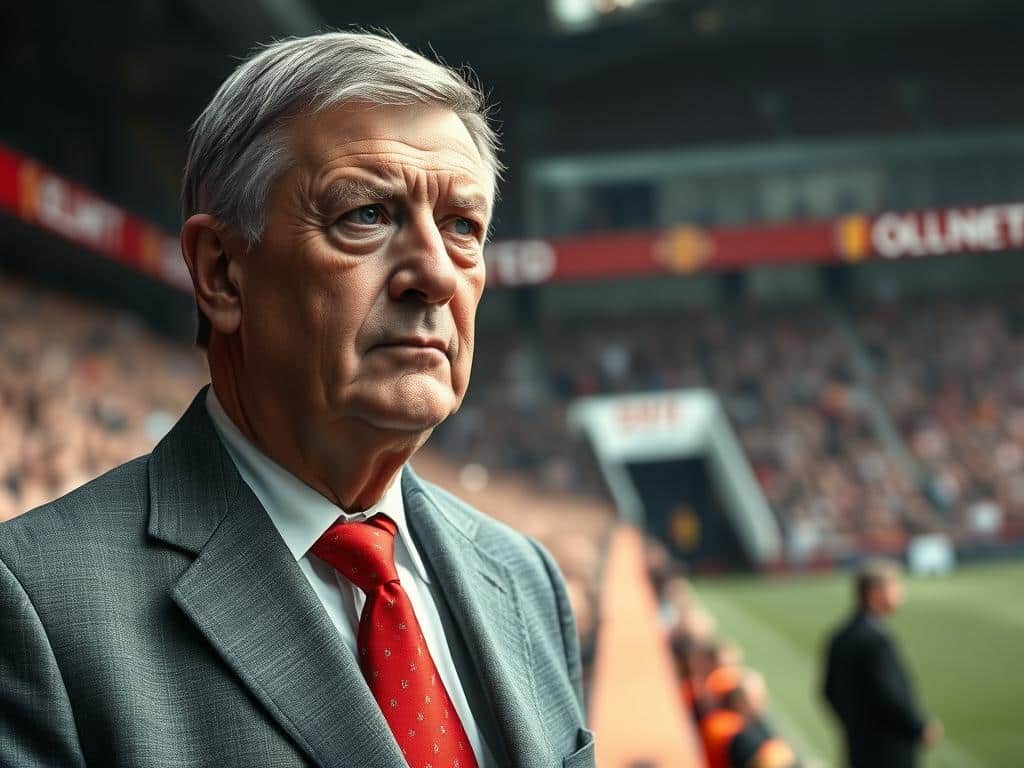
Ferguson’s Arrival and Early Struggles
Fans expected quick fixes, but Ferguson knew greatness took time. His first years were rocky. Transfer budgets shrank from £2.5m to £19k, sparking clashes with chairman Martin Edwards. Critics called for his head after an 11th-place finish in 1989.
Yet Ferguson’s vision never wavered. He splashed cash on gems like Gary Pallister (£2.3m) and Paul Ince (£2.4m), laying groundwork for future success. Behind the scenes, his youth scouts hunted local talent—a bet that would soon pay off.
The Breakthrough: 1990 FA Cup Victory
By 1990, the manager was on thin ice. Then came the FA Cup final replay against Crystal Palace. A 1-0 win saved his job and ignited a dynasty. Mark Hughes’ winner wasn’t just a goal—it was the spark that lit Ferguson’s fuse.
- Boardroom Doubts: Directors debated firing him pre-final. Victory silenced them.
- The Cantona Effect: Eric Cantona’s 1992 arrival turbocharged the 1992/93 title charge.
- Youth Pipeline: Fergie’s faith in kids like Beckham and Giggs set up the Class of ’92.
Overnight, doubters became believers. The revolution had begun.
The Premier League Era: Manchester United’s Domestic Dominance
The 1990s marked a seismic shift in English football—and one club led the charge. When the Premier League launched in 1992, Manchester United transformed from contenders to conquerors. A 26-year title drought ended in the 1992/93 season, igniting an era of sheer dominance.
Winning the First Premier League Title
Sky TV’s billion-pound deal changed everything. Suddenly, teams had cash to spend—and United splurged smartly. Eric Cantona’s arrival in November 1992 was the catalyst. His flair and Roy Keane’s grit turned a good squad into champions.
“Fergie Time” became a weapon. Late goals against Sheffield Wednesday and Liverpool weren’t luck—they were psychological warfare. Fans lived for those stoppage-time moments.
The Class of ’92: Beckham, Giggs, Scholes, and Neville
Ferguson’s faith in youth paid off spectacularly. Six academy graduates—Beckham, Giggs, Scholes, the Nevilles, and Nicky Butt—formed the backbone of the team. Their chemistry was telepathic.
- Beckham’s crosses and Scholes’ passes redefined midfield play.
- Gary and Phil Neville locked down the flacks with military precision.
- By 1999, these players comprised 63% of the Treble-winning XI.
Commercial revenue skyrocketed from £17m to £110m, proving trophies and brand growth went hand in hand.
The Treble: 1999 and the Pinnacle of Success
No moment in football history quite matches the drama of 1999. In just 10 days, Manchester United won the Premier League, FA Cup, and Champions League—a feat no English club had ever achieved. This wasn’t just success; it was pure magic.
Champions League Glory in Barcelona
Down 1-0 to Bayern Munich in the 90th minute, all hope seemed lost. Then came time’s last gasp—Teddy Sheringham’s equalizer, followed by Ole Gunnar Solskjær’s winner 30 seconds later. The Nou Camp erupted as Peter Schmeichel did cartwheels in celebration.
Behind the scenes, suspended captain Roy Keane motivated the team with a fiery speech. His leadership mirrored the club’s never-say-die spirit. Meanwhile, Dwight Yorke and Andy Cole’s partnership shredded Bayern’s defense all game—their telepathic understanding was key.
The Dramatic FA Cup Semi-Final and Final
Two weeks earlier, Ryan Giggs produced one of the greatest FA Cup goals ever. In extra time against Arsenal, he dribbled past four defenders before smashing the winner. That moment alone could’ve defined a season.
The final against Newcastle was almost an afterthought—a 2-0 victory sealing the second leg of the Treble. But these games proved United’s depth. When fatigue set in, different heroes stepped up.
- Global Impact: Merchandise sales jumped 74% post-Treble as new fans worldwide embraced the club.
- Tactical Masterclass: Ferguson’s 4-4-2 outmaneuvered Bayern’s 3-5-2, exploiting wing overlaps.
- Legacy: This remains the gold standard for English clubs in Europe—a true historic comeback.
Twenty-five years later, that Champions League night still gives fans chills. It wasn’t just a trophy—it was the culmination of Ferguson’s decade-long rebuild.
The Glazer Takeover: Controversy and Change
In 2005, a seismic shift rocked the football world—one that divided fans and reshaped the club’s future. The Glazer family’s £790m leveraged takeover loaded £580m of debt onto the team, sparking outrage. For supporters, it felt like a betrayal.
The 2005 Takeover and Fan Backlash
Fans erupted. At Old Trafford, 20,000 scarves in Newton Heath’s green-and-gold colors waved in protest. The message was clear: this wasn’t their club anymore. Some even formed FC United, a breakaway team, to reclaim local spirit.
The Glazers’ PIK loans—with crushing 14.25% interest—drained resources. By 2009, Cristiano Ronaldo’s £80m sale to Real Madrid was linked to servicing that debt. Former Manchester United legends like Gary Neville called it a “disgrace.”
Financial Strategies and Their Impact
While the chief executive defended the Glazers’ model, results were mixed. Commercial revenue grew, but £166m in dividends (2005–2022) fueled fan fury. In contrast, NFL rules bar owners from leveraging teams this way.
Hope arrived in 2023. Sir Jim Ratcliffe’s partial takeover included a 25% fan ownership clause—a small win for supporters after years of tension.
- PIK Loans: High-interest debts that prioritized profits over trophies.
- FC United: A fan-led club born from disillusionment.
- 2023 Deal: Ratcliffe’s compromise aimed to heal rifts.
Sir Alex Ferguson’s Legacy: Sustaining Success
Sir Alex Ferguson didn’t just win trophies—he built a dynasty. His final years as manager showcased a masterclass in adaptation, blending veteran savvy with bold transfers. By 2013, he’d turned his farewell season into an 11-point title romp.
Key Transfers and Tactical Evolution
Robin van Persie’s £80m move in 2012 was a gamble. It paid off instantly—26 goals, including a hat-trick against Aston Villa to seal the title. Meanwhile, Ferguson phased out 4-4-2 for a fluid 4-3-3, letting Carrick dictate tempo.
This wasn’t just about formations. It was about time. “Fergie Time” became a psychological weapon, with late goals breaking rivals’ spirits. His 2013 documentary, *The Final Stand*, revealed how he micromanaged every detail.
Ferguson’s Retirement and Its Aftermath
David Moyes inherited a champion squad but scrapped traditions. He banned chips at meals and overhauled training—mistakes Ferguson avoided. By 2015, Nike walked away, and £1.1bn in post-Fergie signings yielded zero league titles.
Yet Ferguson’s blueprint endures. His last gift? A young David de Gea and Phil Jones—proof even in exit, he planned for the future.
The Post-Ferguson Era: Challenges and Rebuilding
Rebuilding a football giant isn’t easy—just ask the managers who followed Sir Alex Ferguson. Between 2014 and 2022, five permanent bosses tried to fill his shoes. None matched his trophy haul, proving that greatness isn’t copied overnight.
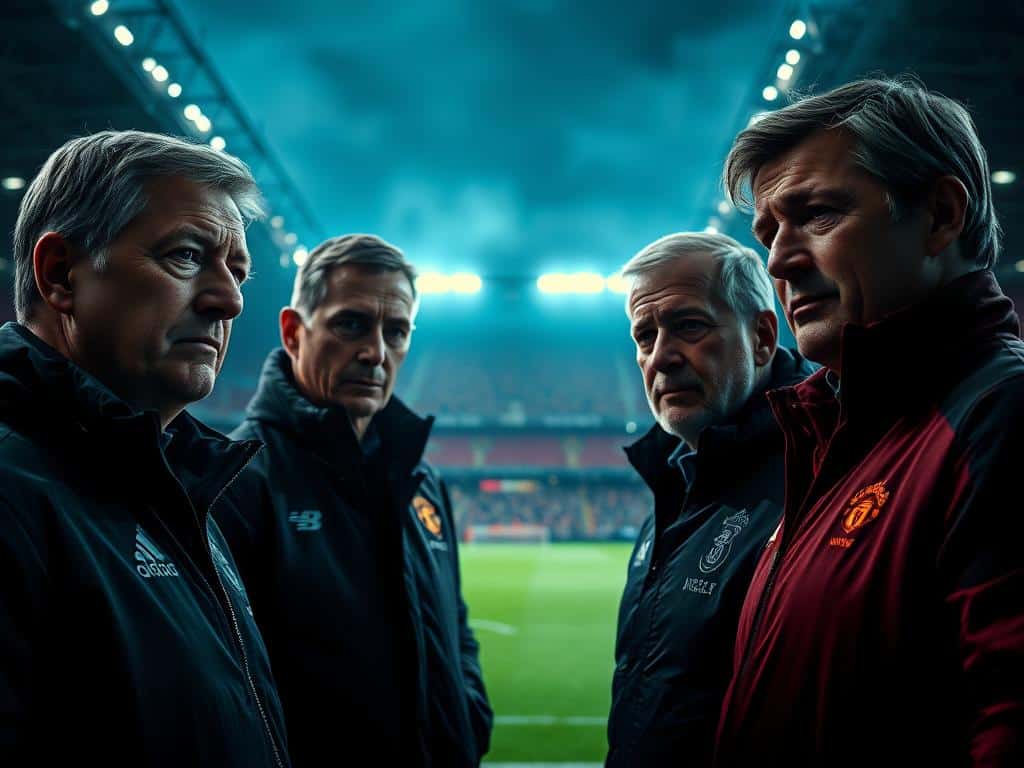
Managerial Turnover and Struggles
David Moyes inherited a title-winning squad but lasted just 10 months. His decision to overhaul staff backfired. Louis van Gaal brought structure but dull play. José Mourinho’s 58% win rate was the highest, yet locker-room clashes cut his tenure short.
Ole Gunnar Solskjær’s emotional return sparked hope, but tactical flaws emerged. By 2022, Erik ten Hag faced the same question: Can anyone stabilize this former Manchester United juggernaut?
Key Signings and Missed Opportunities
The summer of 2016 saw Paul Pogba return for £89m. Despite flashes of brilliance, he left with just one Europa League trophy. Harry Maguire’s £80m fee drew comparisons to Virgil van Dijk—but the impact wasn’t close.
Jadon Sancho’s Bundesliga hype fizzled in the Premier League. Cristiano Ronaldo’s 2021 comeback thrilled fans but stalled youth development. Marcus Rashford remains the last academy graduate to stick.
- Galácticos Flaws: Woodward’s star-chasing ignored squad balance.
- Scouting Gaps: Sancho excelled in Germany but struggled with pace.
- Short-Term vs Long-Term: Ronaldo’s goals came at a cost.
Today, the rebuild continues. Lessons? Patience and planning trump splashy transfers.
The Role of Old Trafford: More Than Just a Stadium
Walk through the gates of Old Trafford, and you step into football history. Known as the “Theatre of Dreams,” this iconic ground has witnessed triumphs, tragedies, and timeless moments since 1910. It’s not just a stadium—it’s the heartbeat of a global club.
Historical Significance and Modern Upgrades
Bombed during WWII, Old Trafford rose from the ashes with a £22k rebuild. By 2006, it became the Premier League’s largest stadium (76,000 seats). Today, plans for a £2bn “Old Trafford 2.0” promise a 90,000-capacity marvel.
Hidden gems like the Munich memorial in the concourse honor the past. Meanwhile, the 1905 Club restaurant offers gourmet dining with pitch views—proof that tradition and luxury coexist.
The Theatre of Dreams and Its Global Appeal
This isn’t just a venue for football. Hosting NFL games and concerts diversifies revenue, while 300,000 annual tour visitors fuel tourism. Matchday income dwarfs rivals:
- Etihad comparison: 23% higher revenue from hospitality.
- Anfield edge: 18% more merchandise sales on-site.
- Media reach: Broadcasts to 190 countries amplify its legend.
From the Stretford End’s chants to executive boxes, every corner tells a story. That’s the magic of this ground—it’s where history meets tomorrow.
Manchester United’s Global Brand: Beyond the Pitch
From jerseys to blockbusters, this club’s influence stretches far beyond the field. With 659 million social media followers and 43 official partners, it’s a brand that dominates both sports and pop culture. Let’s break down how they scored big off the grass.
Commercial Success and Sponsorship Deals
Ever wondered how football jerseys fund trophies? Chevrolet’s £559m shirt contract (2014–2021) paid more than some Premier League clubs’ entire budgets. Here’s where that money went:
- Youth academies: 22% funded training facilities
- Player wages: 35% covered star salaries
- Global tours: 15% banked preseason marketing in Asia and the US
Tezos blockchain’s 2023 partnership shows their tech-forward approach. Unlike traditional sponsors, they’re building NFT platforms for fan engagement.
The Club’s Influence on Popular Culture
David Beckham’s 2003 LA Galaxy move wasn’t just football—it was a media empire launchpad. His transfer spiked US jersey sales by 740%, proving the power of celebrity.
The Class of ’92 documentary franchise turned players into household names. Even the 1994 film “United” starring Eric Cantona introduced the club to new audiences worldwide.
Today’s challenge? Balancing TikTok takeovers with legacy fans. While viral challenges attract Gen Z, traditional supporters crave the authenticity of muddy pitches and local pubs.
The Fans: Heartbeat of Manchester United
From Mumbai to Manchester, fans fuel this team’s heartbeat. Whether packing pubs for 3 AM match screenings or waving protest scarves, their passion defines the club. In 2023, 659 official supporters’ groups spanned six continents—proof that loyalty knows no borders.
Global Fanbase and Community Engagement
Take Mumbai’s “Red Devils India.” Over 5,000 members gather for screenings, chanting like they’re at Old Trafford. Meanwhile, the club’s Foundation serves local communities. Post-Covid, their food banks distributed 12,000 meals weekly—a goal off the pitch.
Engagement strategies vary by region:
- UK: Matchday rituals (pubs, pies, and pre-game marches).
- Asia: Digital watch parties with player Q&As.
Protests and the Green & Gold Movement
When the Glazers took over in 2005, fans fought back. The #GlazersOut campaign trended globally, while matchday attendances dropped 17%. Protesters wore Newton Heath’s original colors—green and gold—to reject commercialization.
By 2024, MUST (Manchester United Supporters Trust) grew to 215,000 members. Their demand? A voice in the club’s future. As one banner reads: “Not for sale, but for supporters.”
Recent Developments: Sir Jim Ratcliffe and the Future
A new chapter began in 2023 when Sir Jim Ratcliffe stepped into the spotlight. His £1.3bn investment for a 25% stake signaled a shift in the club’s direction. Fans wondered: Would this be the fresh start they’d hoped for?
The 2023 Takeover and Its Implications
Ratcliffe’s deal valued the club at £5.3bn—a record for English football. His decision to keep the Glazers as majority owners sparked debate. But INEOS’ multi-club model, including Nice, offers strategic advantages:
- Shared scouting: Pooling resources across clubs for talent spotting.
- Financial flexibility: Loaning players between teams to bypass FFP rules.
- Global reach: Expanding fanbases in France and beyond.
Plans for a New Stadium and Squad Rebuilding
The stadium debate heats up. Options include a £2bn new build with a retractable roof or expanding the South Stand. Meanwhile, the summer 2024 transfer budget sits at £200m plus player sales.
Data drives the rebuild. Jason Wilcox’s analytics team identified Mason Mount’s pressing stats and Rasmus Højlund’s xG potential. The goal? A younger, faster squad ready to compete.
Key Players Who Defined Manchester United’s Success
Great teams are built on the backs of legendary players—those who define eras and inspire generations. At this iconic club, stars didn’t just wear the badge; they transformed it into a symbol of excellence. Let’s dive into the legends who shaped its legacy.
Legends of the Past: Best, Charlton, Cantona
George Best wasn’t just a winger; he was magic in cleats. His 1968 Ballon d’Or season saw 32 goals, including a solo strike against Benfica that’s still replayed today. Off the pitch, his charisma made him football’s first rockstar.
Bobby Charlton embodied loyalty. While Denis Law crossed to City, Charlton stayed, scoring 249 goals and lifting the 1968 European Cup. His leadership after the Munich tragedy cemented his place in history.
Then came Eric Cantona. His 1996 return from a ban sparked an 11-game winning streak, clinching the title. The collar-up swagger and chip against Sunderland? Pure theater.
Modern Icons: Ronaldo, Rooney, Fernandes
Cristiano Ronaldo’s 2008 campaign rewrote records—42 goals, a Champions League trophy, and the Ballon d’Or. His stepovers and free-kicks were worth the £12m contract.
Wayne Rooney mastered contract brinkmanship. His 2010 transfer request led to a pay bump, but his 253 goals justified every penny. Few could play striker, midfielder, and winger with equal fire.
Today, Bruno Fernandes owns the captain’s armband. In 2023, he created 119 chances—a Premier League record. His position as playmaker revived the team’s attacking DNA.
- Emerging Star: Alejandro Garnacho’s rapid rise puts him in line for the iconic #7 shirt.
- Stat Kings: Fernandes averages 3.2 key passes per game—higher than De Bruyne in 2023.
- Legacy Builders: From Best’s flair to Ronaldo’s power, each era had its hero.
Manchester United vs. Manchester City: A Rivalry Renewed
Derby days in Manchester are more than just games—they’re battles for city supremacy. This rivalry has grown from local bragging rights to a clash of football philosophies. With both clubs now global giants, every meeting carries Champions League-level intensity.
Historical Context and Key Matches
The 2011 Community Shield showed the matches’ drama. United trailed 2-0 but roared back to win 3-2, with Nani’s late chip sealing it. Fast-forward to 2023: the first all-Manchester FA Cup final saw Manchester City’s 2-1 victory, though United’s Garnacho threatened with blistering pace.
Memorable moments define this feud:
- 2012: City’s “Aguerooo” title win crushed United’s hopes, forcing a tactical rethink.
- Facilities gap: Etihad Campus’ £200m training complex vs. Carrington’s dated labs.
- Safety first: Derby ticket allocations now cap away fans at 2,800 to reduce tensions.
The Impact of City’s Rise on United’s Strategy
Manchester City’s £2.1bn investment since 2008 forced United to adapt. Their strategy shifted from Galácticos signings to data-driven picks like Rasmus Højlund. Ten Hag’s 2023 FA Cup setup—using McTominay as a false nine—showed creative counterplays to Pep’s system.
Off the pitch, the media war thrives. Fan-run Twitter accounts like @UnitedStand mock City’s empty seats, while @City_Xtra highlights United’s trophy droughts. This digital banter keeps the rivalry alive worldwide.
The Manchester United Success Story: A Blueprint for Excellence
What defines a football giant? It’s more than trophies—it’s resilience, vision, and fan passion. This club’s journey teaches us that greatness thrives where culture and strategy collide.
From the Busby Babes to the Class of ’92, youth development has been the golden thread. But today’s challenge? Balancing commercial growth with on-field grit. The Glazers’ era showed how financial overreach can cloud a legacy.
Now, INEOS brings fresh hope. A new stadium plan and data-driven signings could mark a turning point. The end goal? Reviving the fearless DNA that made this team iconic.
For fans, the lesson is clear: true success isn’t just about winning—it’s about staying united, on and off the pitch.


